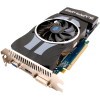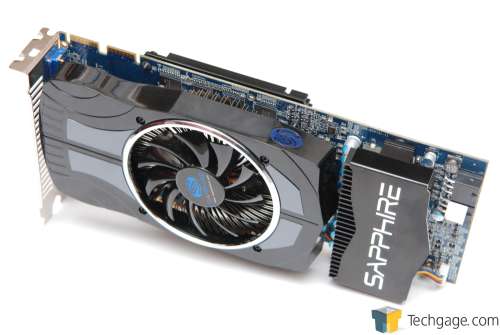- Qualcomm Launches Snapdragon 4 Gen 2 Mobile Platform
- AMD Launches Ryzen PRO 7000 Series Mobile & Desktop Platform
- Intel Launches Sleek Single-Slot Arc Pro A60 Workstation Graphics Card
- NVIDIA Announces Latest Ada Lovelace Additions: GeForce RTX 4060 Ti & RTX 4060
- Maxon Redshift With AMD Radeon GPU Rendering Support Now Available
Sapphire Radeon HD 4870 Vapor-X 2GB

Believe it or not, despite the HD 4890’s launch last month, the HD 4870 is still totally relevant, thanks to ATI’s current pricing structure. There’s a card for every budget, and if you’re willing to spend around $180, you can get hooked up with a 1GB version of the card we’re taking a look at today. It’s silent, keeps cool, and still delivers great performance for the money.
Page 10 – Final Thoughts
When Sapphire asked us to take a look at the Vapor-X version of their HD 4870, we thought it was a little odd at first given the HD 4890 was soon to be released, but as mentioned earlier, it still deserves a spot on your list of cards to consider. Today’s GPU market is a good one, with a price-range to fit every budget, and the HD 4870 in particular perfectly fits into “just under $200” slot.
At that price, it sits alongside NVIDIA’s GeForce GTX 260/216 card, and like their prices, both performed quite well throughout all of our tests. In the majority, NVIDIA’s card pulled ahead, but we attribute some of this to be due to the fact that we’re using a few games that are known to cater to the green team (we’re in the process of revising our list of games to use for these articles). The original HD 4870 might have come out close to a year ago, but it still proves that we’re in no incredible rush for a major architecture upgrade (although one would be nice).
So what about this card in particular? Sapphire did a great job in the design as far as I’m concerned, because although it’s not the prettiest card out there, it serves its function well, and that’s to cool well enough to keep the card working well (overclocking included) while remaining as quiet as possible. I can honestly say that there is no comparison between this and the reference card where that’s concerned.
And where overclocking is concerned, this card delivered. Although I didn’t include results this time around for post-overclock performance, this card proved 100% stable at 790MHz Core / 1100MHz Memory, set with the Catalyst Control Center. We’re talking 6 straight hours of OCCT 3.0’s GPU stress test along with numerous runs of 3DMark Vantage and a dabble of real-world gameplay. Definitely a sweet overclock.
Although it will be tough to tell the difference if you’re running a machine with numerous audible fans, it’s when you slow the other fans down that you begin to really notice the difference. Whereas our reference HD 4870 was clearly distinguishable among all the other fans in our machine, Sapphire’s Vapor-X has to have an intent ear to pick it out of the crowd. It does its job very well.
As I mentioned before, Sapphire isn’t looking to see the best possible temperatures from this cooler, but rather favors noise, but we found out that it handles both quite well. Although compared to our 1GB reference card the Vapor-X idled five degrees warmer (62°C), it had a far lower load temperature of 80°C (compared to 87°C). During load, the card is a little more audible, but nowhere near the extent of the reference card, which is actually a whine, not a simple hum.
Although I like this card and what it brings to the table, I still feel the 2GB model is a waste of time. For the price of this exact model, you can score an HD 4890, and unless you don’t care deeply about noise, that would be the more sensible purchase. I can’t see proof of more memory being beneficial on a card like this at this point in time, so I really think you should save your money and stick to the 1GB model. Luckily enough though, even the 1GB model falls below some of the competition’s pricing, so choosing it is a no-brainer.

Sapphire Radeon HD 4870 Vapor-X
Discuss this article in our forums!
Have a comment you wish to make on this article? Recommendations? Criticism? Feel free to head over to our related thread and put your words to our virtual paper! There is no requirement to register in order to respond to these threads, but it sure doesn’t hurt!
Support our efforts! With ad revenue at an all-time low for written websites, we're relying more than ever on reader support to help us continue putting so much effort into this type of content. You can support us by becoming a Patron, or by using our Amazon shopping affiliate links listed through our articles. Thanks for your support!






